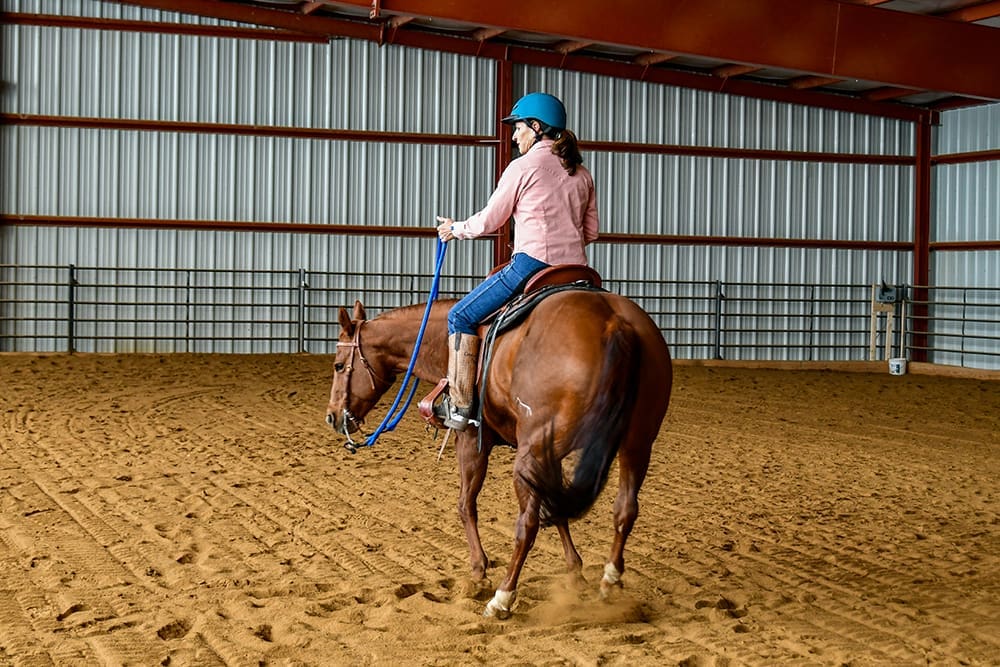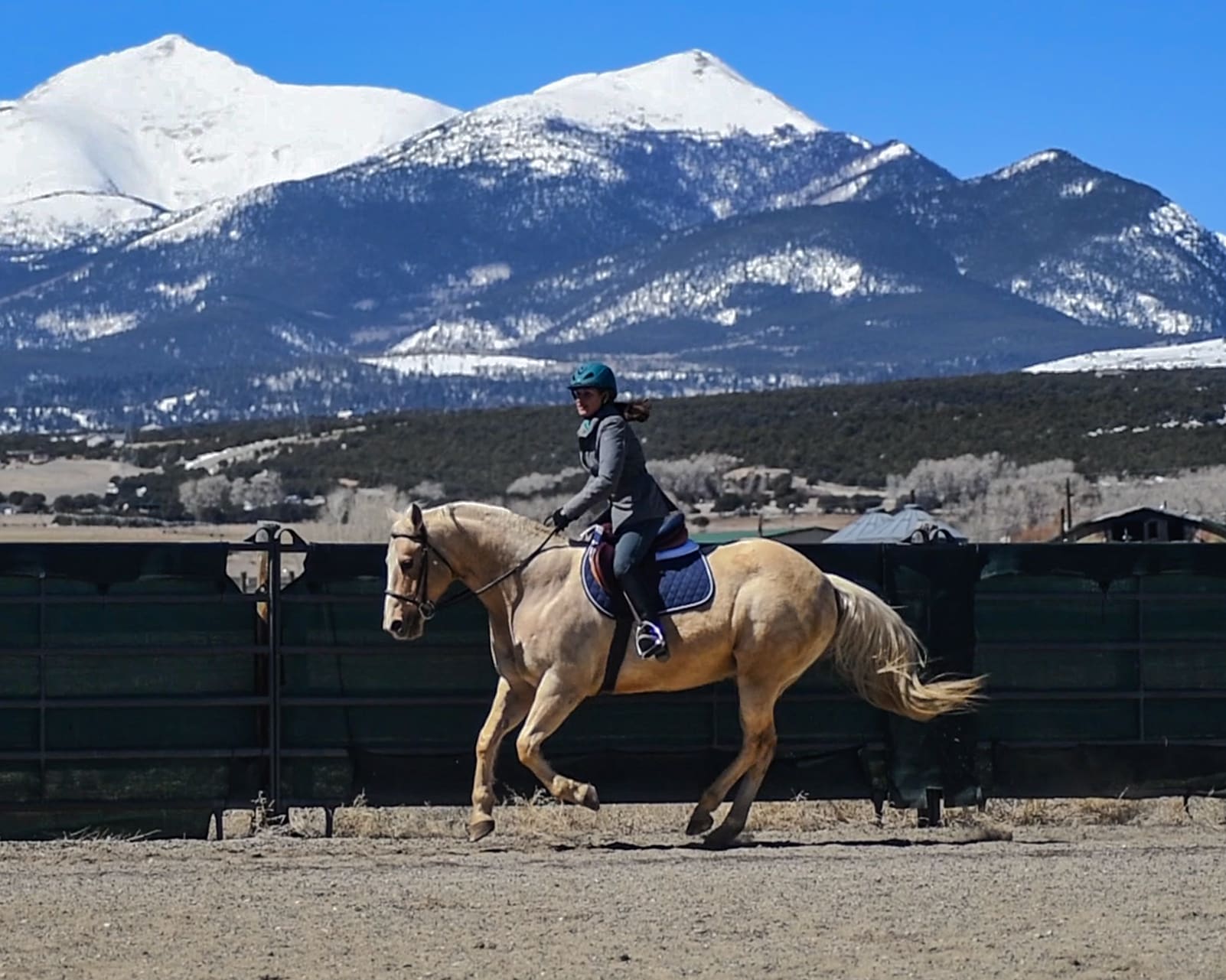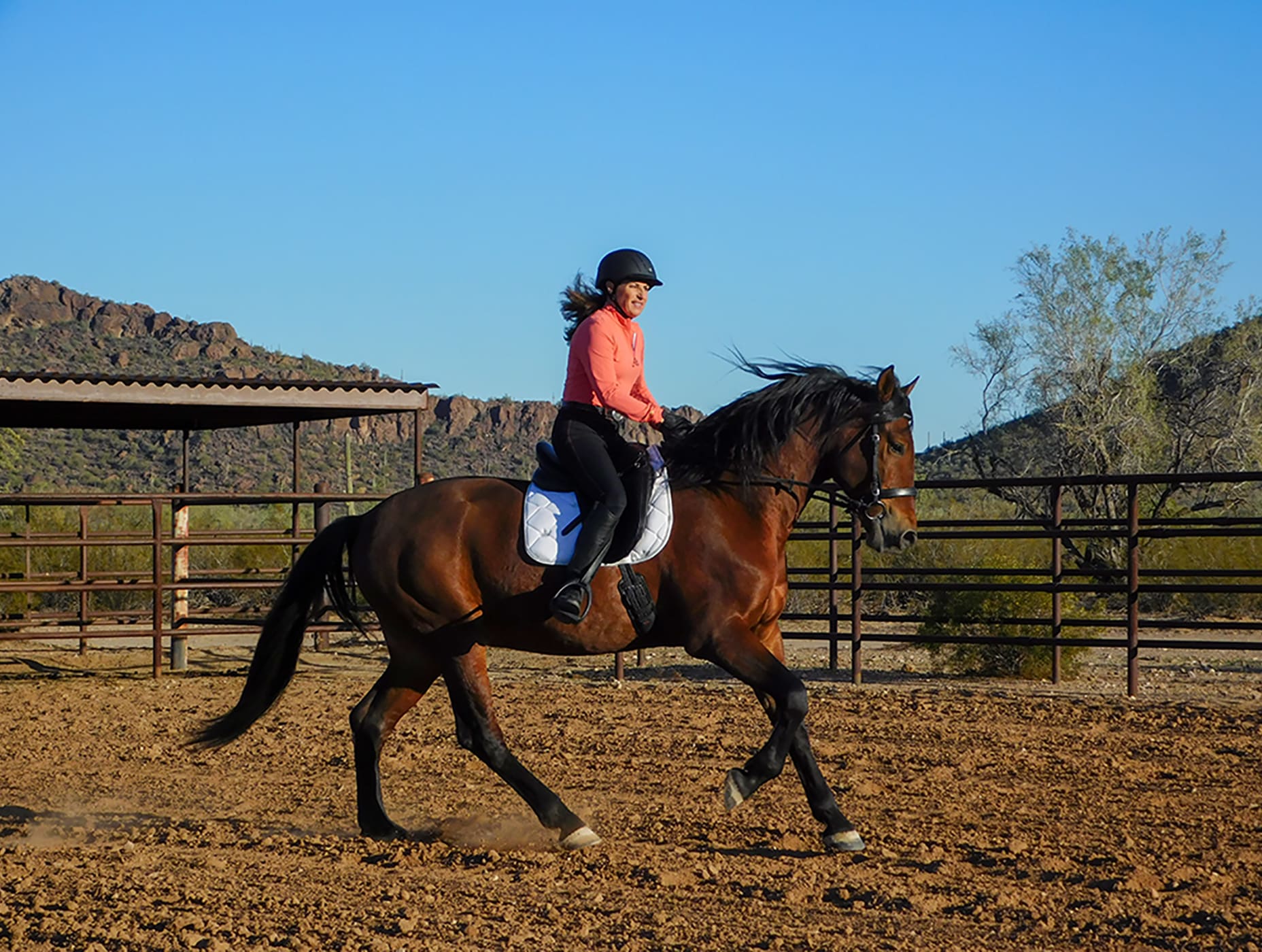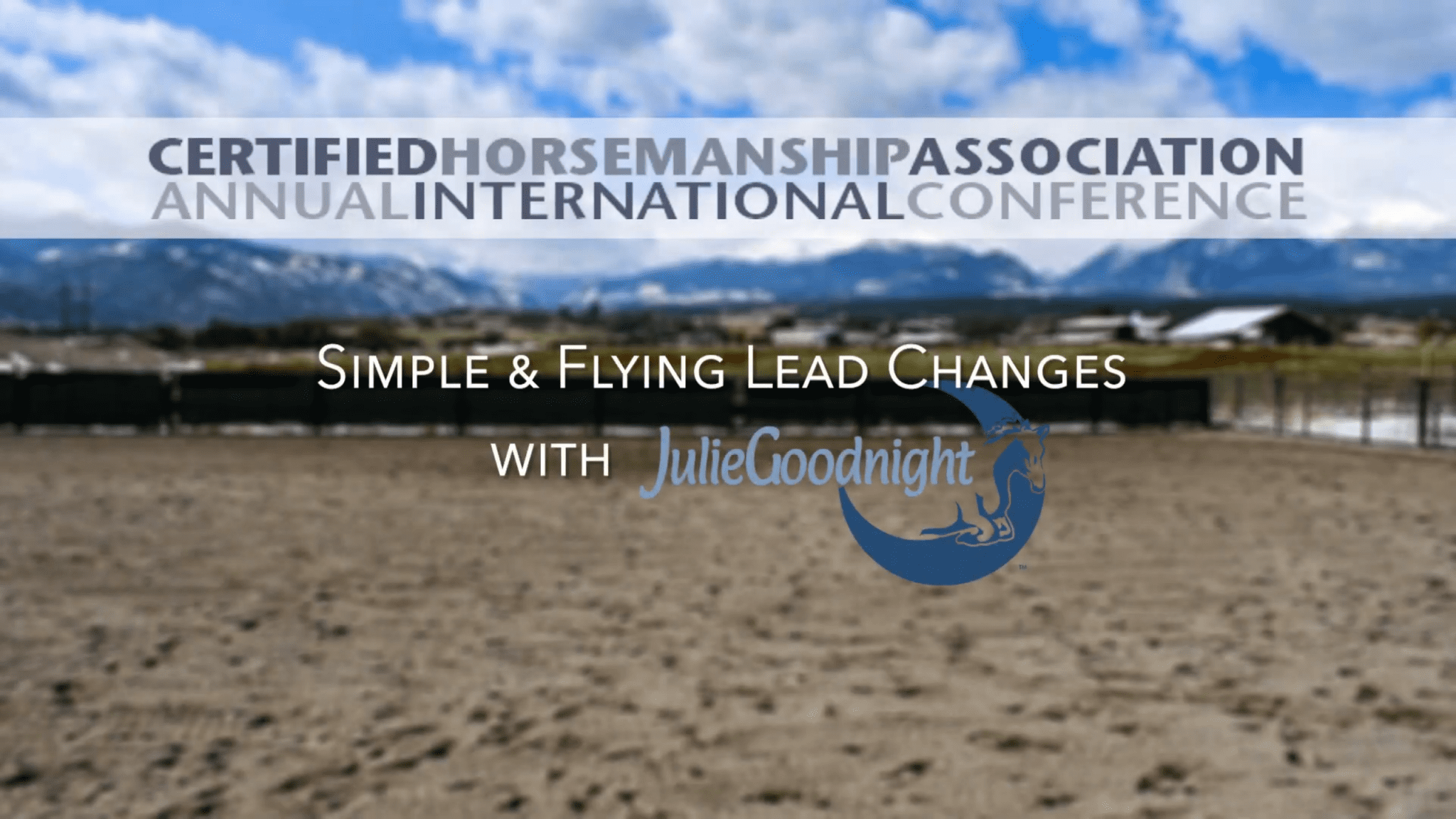Rule Out the Physical
If you’re having trouble with your horse’s canter leads, make sure to rule out physical problems first. Whenever a horse only takes one lead at the canter, you always have to look to make sure the horse isn’t avoiding one lead or the other because of physical ailments. For instance, if it’s the right lead that your horse won’t pick up, then either the right fore or the left hind may be causing her pain. Because of the foot falls of the canter and the excessive weight put on these legs on the right lead (opposite for left lead) your horse may resist picking up the canter on one side to keep herself from feeling painful pressure. You should rule out any soreness or lameness issues with your veterinarian. It’s also possible that the horse’s unwillingness to take one lead comes from an old injury which is no longer causing any pain but which taught her a long time ago to favor one lead. If a horse is not thoroughly rehabilitated after an injury, she may develop a guarding or favoring on one leg just like humans do.
Sometimes horses become one-leaded simply because of poor training. If the rider only asks for a canter and is not specific about which lead he wants or doesn’t ensure that the horse works equally on both leads, the horse learns to favor one lead. Just like us, horses tend to favor one side over the other and with hit-and-miss training; the horse may learn that the cue to canter means “canter on your favorite lead.”
Two really common instances of this kind of inadequate training may be seen with ranch or trail horses that are ridden out of the arena very early on and trained out on the ranch/trail or roping horses that are always asked to canter on the left lead. Interestingly, off-the-track horses can be problematic for lead cues because they are used to picking which lead they need themselves—left lead around the corners and right lead on the straight-aways. So they are not used to having to think about which lead you want when cued.
Lead Training
Once a current physical problem is ruled out, two things will have to happen in your horses training before he will reliably take the correct lead when you ask. First, he will have to be pushed into the right lead once in each training session and then cantered on that lead for as long as he can take it so that he gets stronger on the weak lead. This may require weeks of conditioning and it will take considerable skill and patience on the part of the rider to get him on that lead.
To set your horse up for the correct lead, always cue as you move into a corner — not during the turn or coming out of the turn, but just before the turn. In this position, the horse should know which direction he is going and he’ll be positioned with his hips in, the way his body needs to be to take the correct lead, so that he can push off with the outside hind leg.
The cue for the canter on the correct lead use your outside leg, back about 6 inches (to bring his hips in and his outside leg underneath him), slightly lift your inside rein (to shift his and your weight to the outside and free-up his inside shoulder to take the lead.) and push with your seat in the canter motion. You might also use the kissing sound as a voice cue, which gives your horse a hint of what you are asking. If you are weighting the inside when you cue your horse to canter or you are cueing when his hips are positioned out, he will have difficulty taking the correct lead.
In the beginning, the rider may have to hold the horse in the lead with an exaggerated outside leg holding the horse’s hip to the inside and the riders weight off the back and off the inside. You will have to let the horse gallop faster than normal as he reconditions and re-coordinates on that lead.
Gradually as the horse becomes more conditioned on the right lead it should be easier and easier to cue for it. The rider has to make sure the cue for each lead is different and clear. You need to have considerable control over the horse’s haunches, to position her “haunches-in” when you ask for the canter and you will have to be able to lift the horse’s inside shoulder.
On my video about the canter, “Canter with Confidence,” (available at http://shop.juliegoodnight.com) lead problems are addressed and a series of training exercises are shown that will help you get the horse on the right lead (or left lead, whichever the case may be). It is volume 4 in my riding series and it covers everything from footfalls, to cueing and riding the canter, to lead problems to flying lead changes.
–Julie Goodnight



